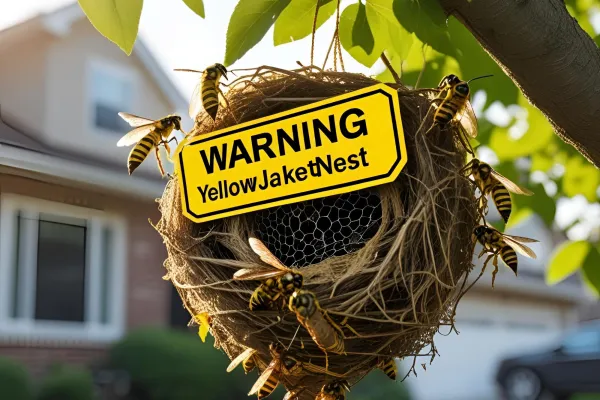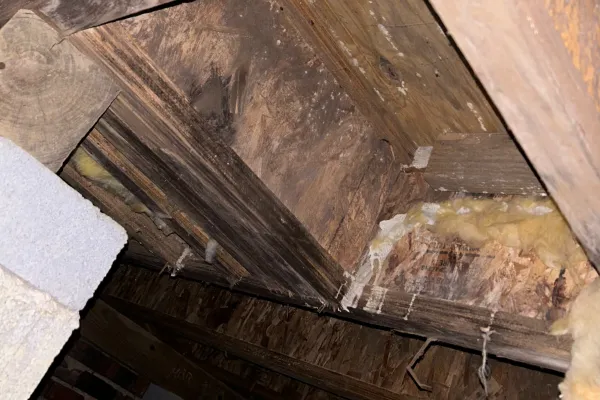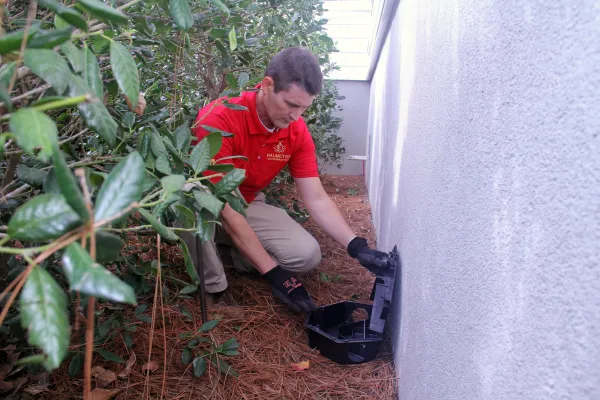What Carpenter Bees Do to Wood

What Carpenter Bees Do in the Wood
Most people think of bees as helpful pollinators—and that's true. But not all bees behave the same way. Unlike honeybees, carpenter bees don't live in hives or produce honey. Instead, they drill into wood to make their nests, which can cause serious damage to homes, decks, and outdoor structures over time.
Carpenter bees don't eat wood like termites. Instead, they bore perfectly round holes about the size of a dime into exposed wood surfaces. Once inside, the female bee creates long tunnels, called galleries, where she lays her eggs and stores pollen to feed her young.
Common spots carpenter bees target include:
Deck railings
Fascia boards and eaves
Wooden siding
Fence posts
Outdoor furniture
Unpainted or untreated wood
How Carpenter Bees Damage Structures
At first, a single carpenter bee hole may not look like much. But over time, the damage can add up:
Weakened Wood
Multiple tunnels carved through beams, railings, or siding can weaken the wood's strength, making it more likely to splinter or crack. Each season, the bees lengthen and branch the tunnels to make new brood chambers, so the damage compounds.Repeated Nesting
Carpenter bees are creatures of habit. In late summer and fall, many adults overwinter inside the same tunnels they drilled that spring. When warm weather returns, the females often reuse and extend those galleries instead of starting fresh. Old tunnels smell like "home"—they hold scent cues (pheromones), frass dust, and wood odors that signal a safe site.Woodpecker Damage
Here's the double trouble: woodpeckers love to feed on carpenter bee larvae. Once they hear buzzing inside the wood, they'll peck at the surface, causing even bigger holes and further destruction.Moisture Problems
The entry holes and tunnels can allow moisture to seep into wood, leading to rot, decay, or mold growth.
Signs of Carpenter Bee Activity
Homeowners should look for these common signs:
Round, smooth holes in wood surfaces
Sawdust-like shavings under holes (called "frass")
Bees hovering around decks, railings, or eaves
Increased woodpecker activity near the home
How to Protect Your Home from Carpenter Bees
Paint or stain wood surfaces, since carpenter bees prefer untreated lumber.
Fill existing holes with wood filler to discourage re-nesting.
Install protective coverings on exposed wood areas.
Call Palmetto Exterminators if the problem persists, since treating active tunnels requires safe handling and sometimes pest control products.
Carpenter bees may not be as destructive as termites, but over time, they can cause costly structural damage if left untreated. Palmetto Exterminators understands how to identify carpenter bee activity, prevent further nesting, and protect your home's wood from long-term damage.
Frequently Asked Questions About Carpenter Bees
1. Do carpenter bees eat wood?
No. They tunnel through wood to make nests, but don't eat it.
2. Are carpenter bees dangerous to people?
Males can be aggressive, but don't sting. Females can sting, but usually won't unless provoked.
3. What kind of wood do carpenter bees prefer?
They prefer untreated, unfinished, or weathered softwoods like pine, cedar, and fir.
4. Can carpenter bee damage get worse over time?
Yes. Bees return to the same spots year after year, making tunnels longer and causing more damage.
5. How do you get rid of carpenter bees naturally?
Painting and sealing wood can help deter them, but active infestations often require professional help.
6. Why do woodpeckers make carpenter bee damage worse?
Woodpeckers tear into wood to reach carpenter bee larvae, often creating much larger holes than the bees themselves.


